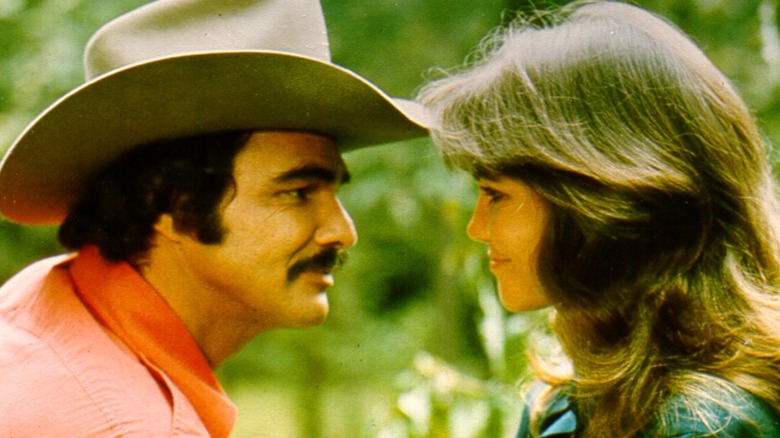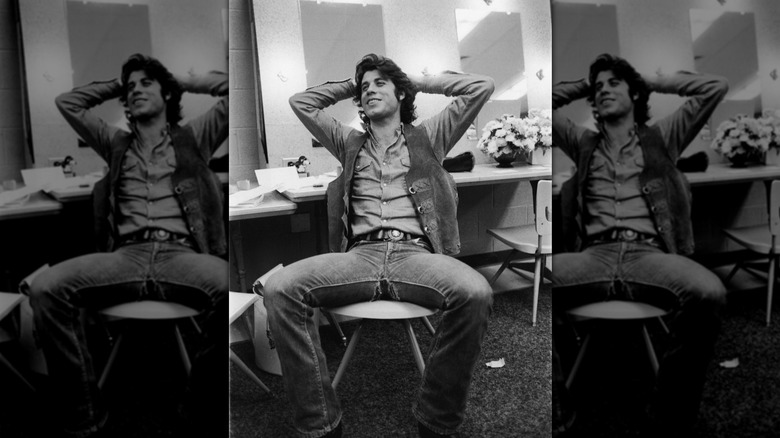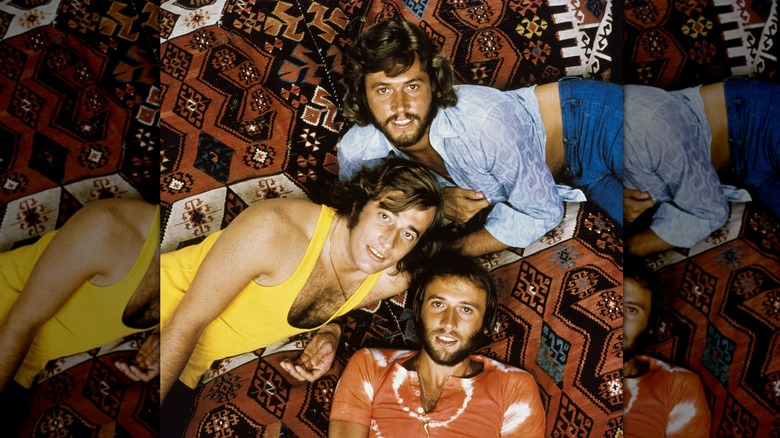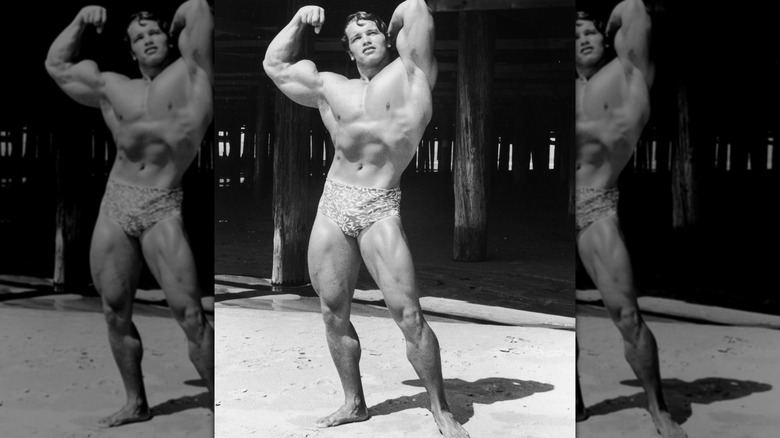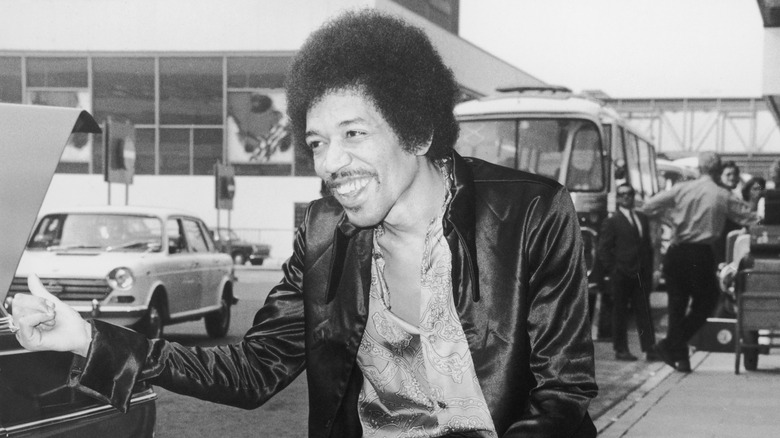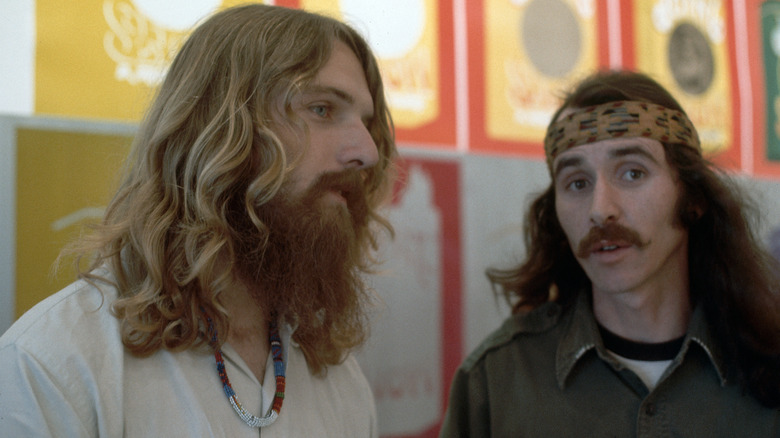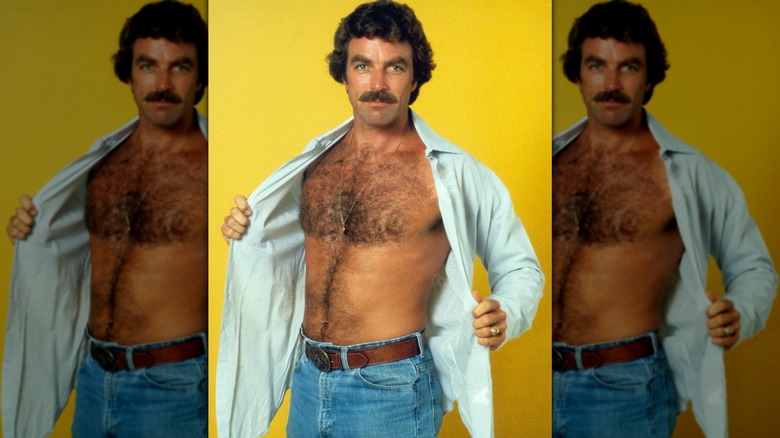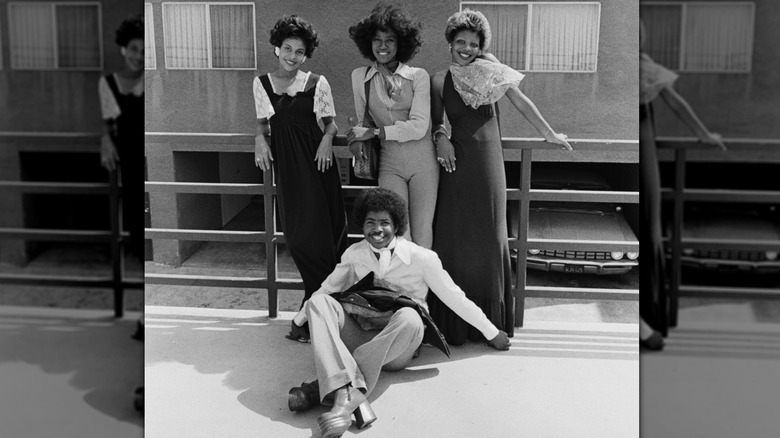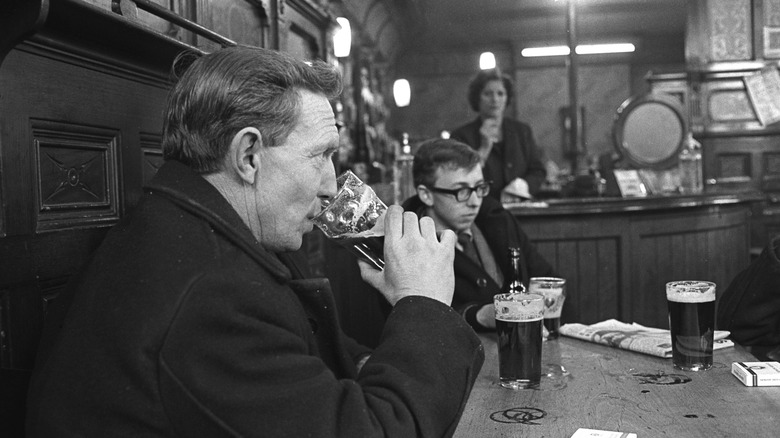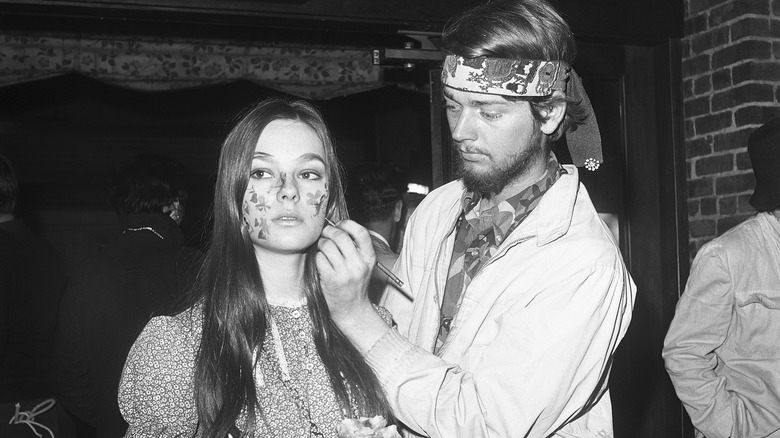Surprising Things Women Found Attractive 50 Years Ago
In 1973, the top song was "You're So Vain" by Carly Simon. "The Godfather" had just come out, and gas prices were, on average, 39 cents per gallon. Oh, how the times have changed.
But in some ways, the trends of 50 years ago are alive and well today. Take the shag haircut, for example. It was the most popular hairstyle in 1973, and it's had a wild resurgence in the past few years. Moreover, 1970s fashion has also made quite a comeback as of late, with bell bottoms, platform shoes, and bold colors and patterns all topping the trends in the last couple of years.
When it comes to what women found attractive 50 years ago, some things have stayed the same, but many things have changed. Attraction is a very subjective thing, but nonetheless, several distinct trends and attributes were alluring to women in the 1970s — for some interesting reasons. Below, we'll dive into the surprising things women found attractive 50 years ago.
The tall, dark, and handsome look
Most of the popular '70s heartthrobs all had a few things in common: dark hair and a tall, strong build. Consider actor John Travolta, who rose to fame after starring in the 1970s classics "Grease" and "Saturday Night Fever." Travolta's height — 6 feet 2 inches — and his dark hair and light eyes made him an instant crush for many women 50 years ago. Other popular celebrities who shared that classic tall, dark, and handsome look were Christopher Reeve, known for playing "Superman," and Burt Reynolds, who starred in "The Longest Yard."
While some may say that heterosexual women 50 years ago liked the tall, dark, and handsome look because it fits the stereotype of an attractive man, that may not be entirely true. There's actually science behind why some women may be more drawn to men who exhibit tall, dark, and handsome traits.
According to David Puts, Ph.D., an associate professor of anthropology at Pennsylvania State University who analyzes the evolution of human sexuality,
research shows that hetero women tend to gravitate toward men who have traits that are "a bit more masculine" than average (via Inverse). More masculine traits may include being tall, having dark features, and having a deeper voice — and it's safe to say many of the popular men 50 years ago had those exact traits.
Colorful clothing
While neutral colors were frequently worn 50 years ago, just like they are today, the late 1960s and early '70s introduced much more pattern, color, and experimental styles into menswear. No longer was the masculine ideal a dark, neutral suit; orange, red, and yellow patterned shirts and pants held their own particular sex appeal.
Embracing wild patterns and bright colors was part of the countercultural movement that began in the late '60s. Wearing nontraditional colors and patterns showcased a person's individuality while also casting aside social norms. Heterosexual women who were looking for a more progressive, nontraditional mate would have likely found men who sported colorful or patterned clothing both cool and attractive.
For example, studies indicate that heterosexual women are often attracted to men who wear red because it represents social rank and authority. "We found that women view men in red as higher in status, more likely to make money and more likely to climb the social ladder," says the study's co-author, Professor Andrew Elliot (via The New Zealand Herald).
A muscular build
Okay, so, it's probably not that surprising that heterosexual women 50 years ago were into men who were muscular. After all, a muscular build has been a stereotypical staple of male beauty standards for over a hundred years. Research suggests both women and men are attracted to muscularity, as it suggests health and vitality.
But about 50 years ago, we were on the brink of a new body trend for men: bodybuilding. You can blame Arnold Schwarzenegger for the rising trend of extreme muscularity due to his role in 1977's "Pumping Iron," where he played a character obsessed with bodybuilding.
These days, many straight women actually do not find extremely muscular men attractive. Bodybuilder Chris Bumstead told Essentially Sports in 2022 that women actually "find that [a bodybuilding physique] kinda gross." However, 50 years ago, it seemed that more women liked an uber-muscular build, considering Arnold Schwarzenegger's popularity.
A more androgynous look
In addition to the strong builds that women have been traditionally attracted to throughout history, women in the late 1960s and early '70s also liked a slimmer build and more "effeminate" features like long hair. A columnist named Everett Mattlin wrote for the Chicago Tribune in 1968, per PBS, "It's not just the way we look; the whole male-female relationship is confused. In novels, plays, movies, TV — all, presumably, reflecting life itself — men are weak, fumbling, impotent, while women are strong, decisive, domineering ... All is topsy-turvy in a neuter world."
While Mattlin may have been right that the gender roles were reversed, the new androgyny was undeniably attractive. Icons like David Bowie and Mick Jagger grew to immense popularity, all the while sporting long hair, tight clothes, and makeup.
The average man in the early '70s may not have donned a full face of makeup, but the androgynous trend did trickle down in other ways. For example, many men opted for long hair at this time. These changes were likely due to the countercultural and women's liberation movements at the time, which demanded gender equality as well as resistance to colonial powers, gender norms, and oppression of all people.
Afros
Just like the women's liberation movement fought for equal rights for all women, the Black Power movement of the 1960s and 1970s emphasized Black pride and empowerment — politically, culturally, and economically.
With this came an adjacent movement called the natural hair movement, in which Black people embraced their natural hair textures and styles. Opting to wear hair in an afro was not just a style choice — it was a "symbol of resistance against the oppression and discrimination" (per Black Wall St. Media). Celebrities and other public figures like Jimi Hendrix, Isaac Hayes, and Angela Davis sported afros at the time, demonstrating their pride and resistance to "Eurocentric beauty standards," as described by Black Wall St. Media.
Likely, women who were interested in the countercultural and social justice movements of the time appreciated a nice afro. A groovy afro made a statement in society that embodied the essence of the 1970s and Black pride post-civil rights movements, and immediately grabbed the attention of onlookers.
Big ol' mustaches
These days, it can be rare to see a big, bold mustache out in the wild. But 50 years ago, a full, horseshoe-type mustache — think Hulk Hogan — became popular, especially among biker groups. Other types of mustaches became widespread, too, such as the popular chevron mustache.
The mustache was a popular feature in the Western world in the late 19th and early 20th century — think of those first-class passengers in "Titanic" sporting handle-bar mustaches. But fast-forward to the 1950s and the clean-shaven look was at its height. By the time the '70s rolled around, the mustache was back in full force, but this time, it was considered counterculture that was often accompanied by long, messy hair and associated with hippies and Queer men.
In the 1960s, mustaches may have been for the hippies and counterculturalists, but by the '70s, they became more common in mainstream society and were attractive to heterosexual women due to the mustache's "masculine swagger" and "hypermasculine associations," per The New York Times. Popular heartthrobs at the time like Tom Selleck and Burt Reynolds wore mustaches, further popularizing the facial hairstyle. Plus, there seems to be some science behind people liking mustaches. According to The New York Times, clean-shaven men are ranked as less sexually attractive than those with facial hair.
Chest hair (and gold chains)
If you asked heterosexual women today what they found attractive in men, it seems unlikely that many would say chest hair. In fact, chest hair has gotten such a bad reputation lately that a 2018 study by Mintel showed that up to 30% of British men remove their chest hair. But 50 years ago, chest hair was not just attractive to women — it was downright sexy.
Consider Tom Selleck. In the 1970s, Selleck was a model and spokesman for Salem cigarettes and often appeared in magazine advertisements and on billboards with a lit cigarette in hand and a shirt unbuttoned to reveal tufts of chest hair (bonus points for a gold chain). As everyone knows, sex sells, and 50 years ago, chest hair was considered so sexy that it was used as a marketing tactic. It makes sense that women were attracted to hairy men; after all, research shows that women are attracted to men with body hair as it indicates sexual maturity.
Platform shoes
Another surprising thing women found attractive on men 50 years ago is platform shoes. You may be reading this in disbelief, but it makes sense in context: platforms shoes were just another "groovy" fashion statement that emerged with the countercultural movements of the time. Platform shoes, which are somewhat reminiscent of women's high heels, are undeniably feminine and were a representation of the emerging dismantling of gender roles.
"Women prefer great degrees of masculinity for short-term partners, but for long-term relationships what we are finding is that they prefer more feminine ... men," said researcher David Perrett from the University of St Andrews (via The Guardian).
According to RetroWaste, men's fashion in the early '70s was a vast departure from what was traditionally worn in previous decades. In contrast to dark suits and tailored shirts and trousers, platform shoes and flared pants or bell bottoms were the norm in men's fashion — something we see women wearing today. It just goes to show how fashion is genderless, challenging traditional norms and stereotypes throughout the ages. For women who were part of the hippie movement at the time, men who dressed in these somewhat surprising fashion choices would have been considered interesting and attractive.
Drinking heavily
Drinking heavily is somewhat common these days, but it's certainly not something people look up to. Now that the health risks associated with heavy drinking are better understood and documented, drinking alcohol, for some, is off the table.
But back in the late 1960s and early '70s, men who drank a lot were considered manly, and being able to drink excessively was a "sign of virility," per Silkworth.net. Being a woman who drank heavily in this era was stigmatized, according to a 1962 article by Don Murray. But being a male alcoholic came with a sense of status. "'Drunk as a lord,' is a tribute. No one ever said approvingly, 'She was drunk as a lady,'" wrote Murray.
Don Draper, the leading man in the 1960s and '70s-inspired TV show "Mad Men" is known as a very heavy drinker and acts as one example of this male archetype. Despite what appears to be alcoholism — or maybe in spite of it – Draper maintains his status of a sex symbol.
Non-traditional gender roles
When you think about gender roles of the past, you may imagine traditional values: men as breadwinners and women as housewives. But around 50 years ago, there was a period when those gender stereotypes were flipped on their head, paving the way for gender equality in the years to come. A 1970 Time article (via CNN) about the second-wave feminist movement said, "They want equal pay for equal work, and a chance at jobs traditionally reserved for men only. They seek nationwide abortion reform — ideally, free abortions on demand. They desire round-the-clock, state-supported child-care centers in order to cut the apron strings that confine mothers to unpaid domestic servitude at home. The most radical feminists want far more. Their eschatological aim is to topple the patriarchal system in which men by birthright control all of society's levers of power — in government, industry, education, science, the arts."
This new way of thinking trickled into the mainstream, and more and more people were fighting for gender equality. The movement picked up so much speed that, in 1975, Time gave its "Man of the Year" award to "American Women" (per CNN).
By the 1980s, the feminist movement faced backlash and traditional values settled back into mainstream ideology. However, throughout the 1970s, men who were willing to accept new changes were certainly attractive to heterosexual women of the time.
